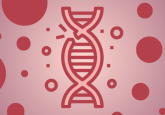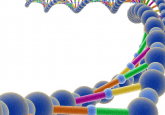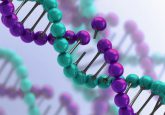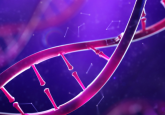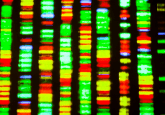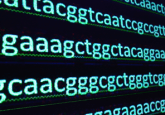Hesaam Esfandyarpour and Chris Barbazette on the GenapSys™ revolution
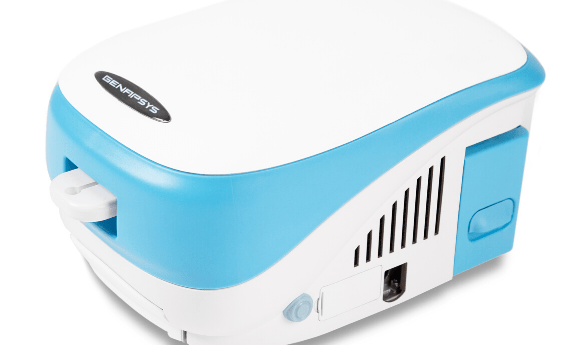
At ASHG 2019, we caught up with GenapSys™ Founder Hesaam Esfandyarpour and Commercial Lead Chris Barbazette to discuss the new GenapSys Sequencer. GenapSys have developed a novel electrical-based platform which aims to change the landscape of DNA sequencing.
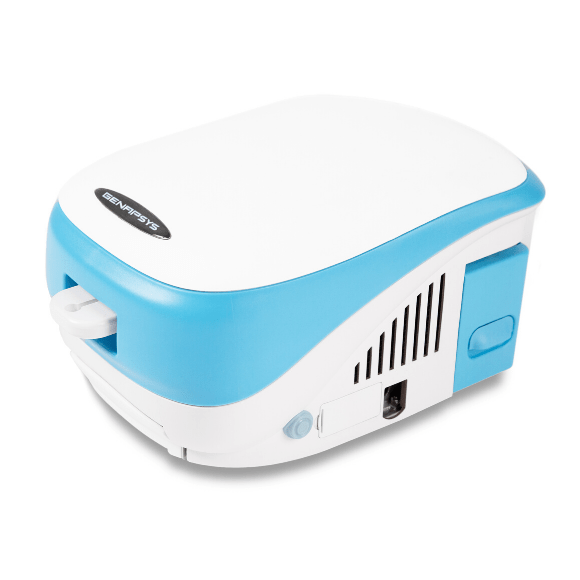
The new GenapSys Sequencer
Can you introduce yourselves and your institution?
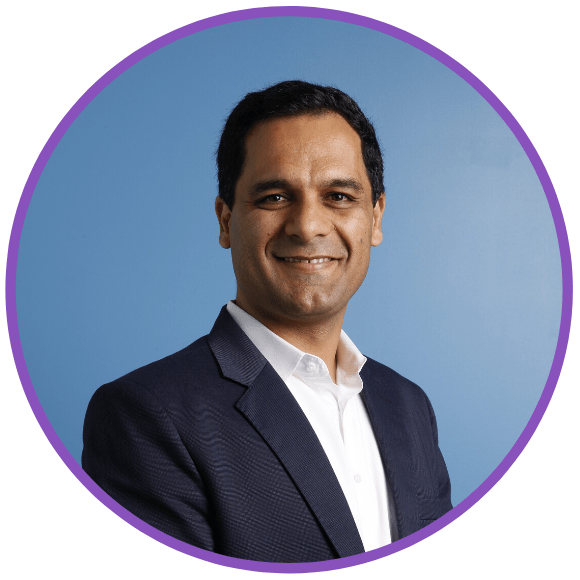
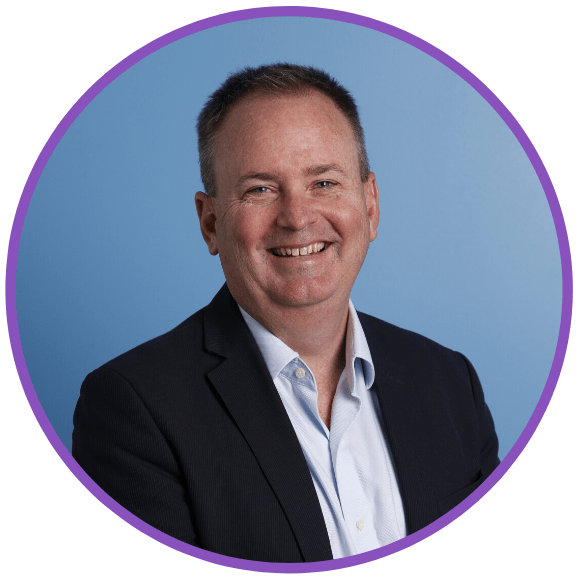
Hesaam: My name is Hesaam Esfandyarpour. I am from GenapSys (CA, USA) and we are here to introduce the GenapSy Sequencer, offering sequencing without compromise.
Chris: I am Chris Barbazette and I am the commercial leader of GenapSys.
What is this technology, and what gap is it filling in the current market?
Hesaam: This is a novel technology based on electronic detection compared with the legacy optical systems. It provides massive improvement in terms of the cost, flexibility, and quality of the data.
How does it build on previous sequencing techniques?
Hesaam: It is quite different from previous technologies. This is semiconductor based, compared with past technology that utilized optics or fluorescent tags, a high-power laser, camera, scanner and a robot, which resulted in a big, bulky, expensive machine. With that approach, you are talking about devices that can cost up to one million dollars. In contrast, our device is comparable to the size of an iPad and works with a semiconductor chip that fits in the palm of your hand.
We have three versions of this chip: 1 million sensors, 16 million sensors, and 144 million sensors. All offer a vast range of throughput, depending on the user’s need and application, without being forced to batch samples and wait a long time to receive the data, which is one of the major issues facing sequencing today.
The cost of running current devices is high. To achieve a reasonable cost per sample you require an expensive machine. Every time you run it, a vast number of consumables are required. Due to the high run costs, many samples will need to be batched together. It takes time to collect these samples, meaning you must wait weeks, sometimes months before it’s logical to use the machine. This delay causes a lot of issues for stage three or four cancer patients, as the data is required prior to potential treatment decisions being made — in situations like those, we don’t have the luxury of time. That is just one example of the many issues with legacy sequencing technologies.
Our device solves this problem in a very profound way, in that it provides a flexible solution at a low cost, meaning it is affordable for the majority of people. We believe in a world where every researcher has access to sequencing technology. Sequencing effectively is high-resolution biology; you have access to data on a molecular level. We live in a world of biology — everything around us is biology. If you have a way to read the information, that can be a very different world. This is what we have developed at GenapSys, the enabling tool to power a revolution in genomics.
Chris: If you think about it from an accessibility standpoint, in the world there are approximately 5000 labs that actually have sequencers. If you analyze the information for Thermo Fisher (MA, USA) or other companies, which constitute labs that could potentially use this technology, you are talking about 400,000 labs. Accessibility makes a big difference, and we are really trying to make this technology accessible to as many researchers as possible.
22551
- Talking Techniques | DNA Sequencing with Joanne Hackett
- What is DNA sequencing? Answering some of the most frequently asked questions
- DNA sequencing infographic
What were some of the challenges that you faced while developing this technology?
Hesaam: It has been a great, long ride. I am an electrical engineer by training. I started in a very different field, where I was building semiconductor chips for wireless communications. I became interested in healthcare and genomics for a very personal reason — as a close family member of mine was misdiagnosed at a young age. This experience made me deeply consider what was happening in medicine and genomics, and how we might be able to fix it, to make it more actionable and impactful.
When we examine the digital revolution and semiconductor technologies, we are so advanced. We literally have nanometer capabilities, but when it comes to medicine — specifically genomics — we were not taking advantage of that advancement. Inspired by this, I took a deeper dive into this area through my graduate work at Stanford University (CA, USA). I started learning more about genomics and DNA sequencing — prior to this I barely knew the difference between ABCD and ATCG. I learned about the previously mentioned optical system, which was expensive and lacked flexibility, and saw that the required quality was not there.
Coming from a semiconductor background, I thought about the possibility of measuring the electrical signature of sequencing reactions. I raised the idea with the head of Stanford Genome Technology Center, Ronald Davis, who is well-accomplished in the field of genomics. Davis explained that if I could build these devices, they would be a PC in the world of mainframes when it comes to genomics. As a result, I made the move from radar to DNA 15 years ago. In the first couple of years, we developed a quasi-electronic method. After this we attempted to address the various issues that exist within sequencing with advanced semiconductor-based technology. We then developed the technology for about four years, from 2006 to 2010, at Stanford, and from 2011 till today.
This has resulted in more than a decade of interdisciplinary work. We have a diverse team, we have hardcore chip designers who are developing chips of the same quality as Apple, Samsung and Intel. There are chemists, enzymologists, as well as machine learning and AI experts, all of them work together. Through the past eight-and-half years at GenapSys, it has been a humbling experience watching the technologies merge.
Engineering has its own complexities, physical sciences and biology also have their own complexities; I call this exponential complexity. When you merge biology and technology things never go to plan, the moment one of them gets behind, it has a staggering effect. When you are dealing with biology, it is exciting but unknown territory. It was exciting for me coming from an engineering background and for our team. We have developed a technology, that we believe is one of the most powerful examples that exist today. Imagine reading DNA, each base is approximately 1.3Å apart, atomic-level resolution is required. Everything must be completed to an almost perfect degree. That is what our team has developed, and we are very proud of the product.
Chris: We are just getting into product launch, and for a company of our age, just launching in the market, our IP portfolio currently has hundreds of patent applications, with 75 patents issued worldwide. This is a significant accomplishment for the company as we approach our launch.
What impacts do you predict this technology will have on precision medicine?
Hesaam: We believe that it will accelerate movement in precision medicine, hopefully in a very significant way, by enabling every researcher to have access to high-resolution biology. As Chris mentioned, there are more than 400,000 research labs interested in the world of genomics but only a few thousand of them, 5000 or 6000, can afford to buy those legacy technologies. Owning this platform brings the power of genomics to the researcher’s hand. It means that rather than sending a sample away and having to wait months to get the data back, they can get the data when they wish.
We believe that a platform like GenapSys can enable and accelerate the genomic revolution from a research perspective. There are many other fields such as in the clinic, diagnostics, food testing, forensics, environmental and many others where the impact could be game changing.
Chris: A good analogy is the mobile environment. 20 years ago, we wouldn’t be able to conceive all the technology and apps that are available to us on mobile devices. You can consider the similarities from a biological or personalized medicine standpoint. A vital aspect of personalized medicine is that it revolves around point of care for the patient. It is important to treat the patient rapidly and ensure that their clinician receives the biological information relevant to them. By exploiting the mobile environment, the information can be localized, allowing it to be closest to the patient, and opens up the potential of what we believe this device is capable of.
- ASHG 2019 highlights and updates
- ASHG19: Investigating the racial bias in genetic research
- ASHG19: Expanded human reference genome reflects global genetic diversity
What is your dream for GenapSys in the next five years? And what do you need to get there?
Hesaam: The technology that we have developed at GenapSys is extremely powerful, and this is just the intermediary version. With the technology we use, we have opportunities to go beyond that. This chip has 144 million sensors and allows you to read the information in the highest resolution, it has a gold standard of accuracy. I think that this has the potential to open up the understanding of biology in a very different way.
I believe that our understanding of biology and the amount of data we are collecting is still limited. That will completely change if you give individuals the tool to read molecular information in an easy to use, low cost, accessible, affordable format. Our technology could go beyond DNA, it could read proteins or live cells because the array of sensors does not care what you are examining. That is a very unique, powerful thing that, to my knowledge, has never been done before, as it was not possible to build such a device 10 or 20 years ago. We are in a unique time in history and thanks to all of the advancements over the past 40 years, it is possible to produce this chip at a low cost and high density.
As well as sensing in a high resolution now being possible, computing has advanced considerably. This means that with a system like GenapSys, we can standardize data collection for genomics, and with the help of researchers around the world, bring about new understanding in multiple frontiers of biology.
Personally, I am very excited to see an increased detection of biomarkers for the early diagnosis of cancer. I think that these tools can be game changing and very valuable. We have a whole portfolio in our pipeline for consumer friendly, high-end products utilizing this technology coming in the future.
I think we will see a similar evolution for genomics and biology to that which occurred for computers. It started off with very few computers in the basement of major universities. This then progressed to the mainframes and then into internet cafes and now we have PCs, laptops and iPhones. I expect to see a similar evolution here in genomics. It started with some genetics hobbyists who were curious about gel electrophoresis methods. This has slowly increased and today is already in the thousands. This is like the internet café stage and now we should see a progression into decentralization with a PC-equivalent.
In the next 5 to 10 years, molecular data will be accessible to everyone for all kinds of applications. My PhD advisor once said ‘Hesaam, DNA sequencing truly is in the hands of people, if you have one of them [a sequencer], you can use it in the restaurant, and you can find out if the salmon is really from Alaska or not.’
Now though, since only 5000 of the 400,000 labs can afford a sequencer, clinical diagnostics is very limited. There are currently very few of us who belong to the privileged part of the society who have sequenced their DNA.
Molecular information is all around us. The 38 trillion cells in our body, the cotton of my shirt, the coffee I am drinking, the leather of my watch are all made up of cells that contain DNA. We need it for healthcare, we need it for food testing, we need it for forensics, we need it for environmental purposes, and so on. This technology opens up these opportunities. We do not know exactly all of the potential applications, but we know that the future is beautiful and we are very excited about it.
Check out the rest of our coverage from ASHG 2019 here.
